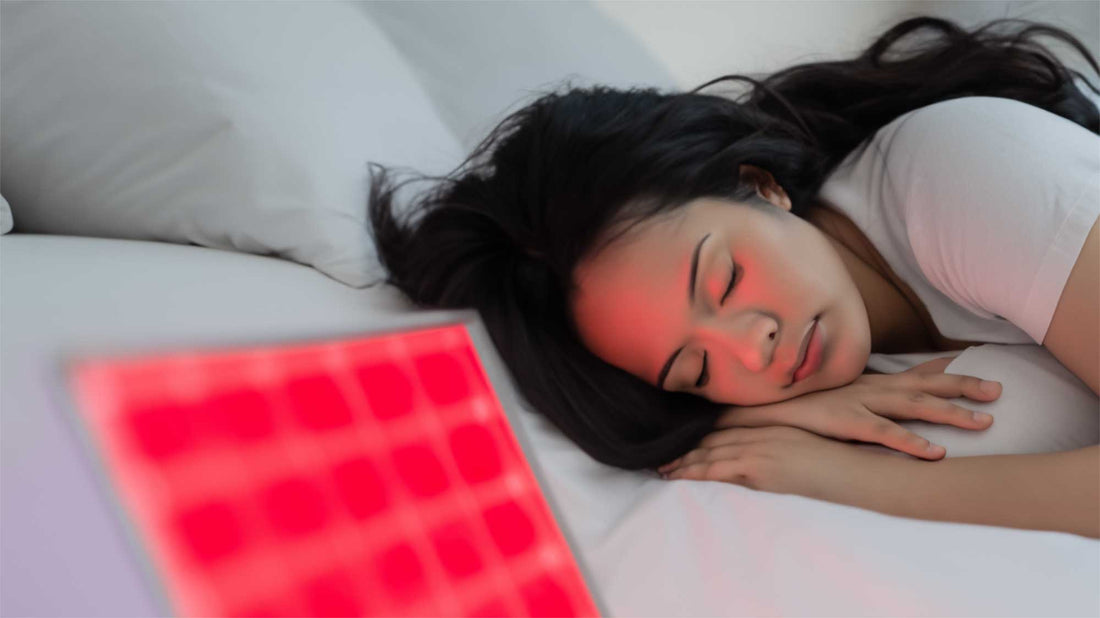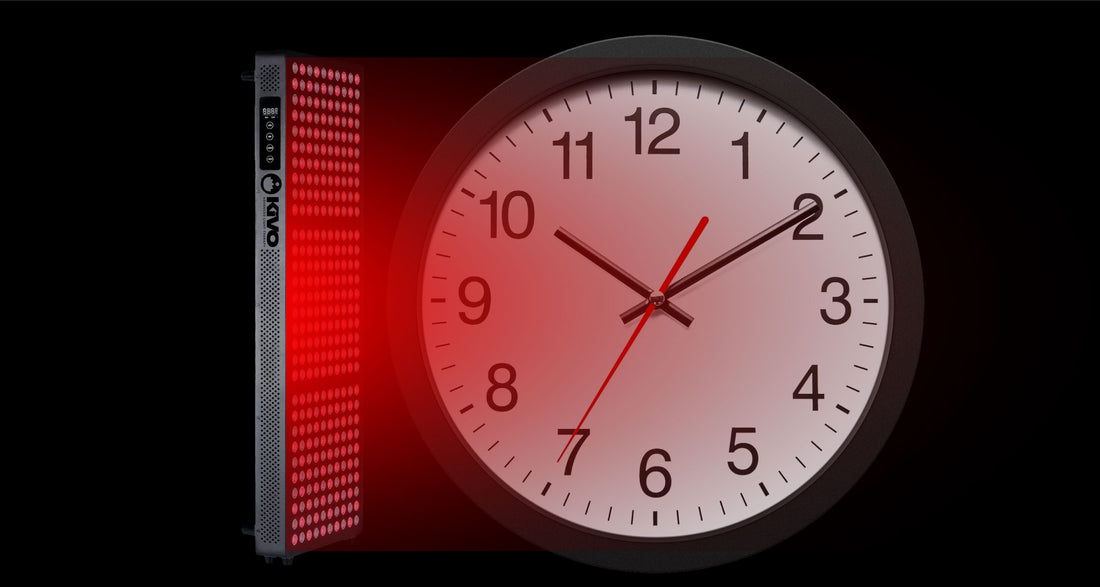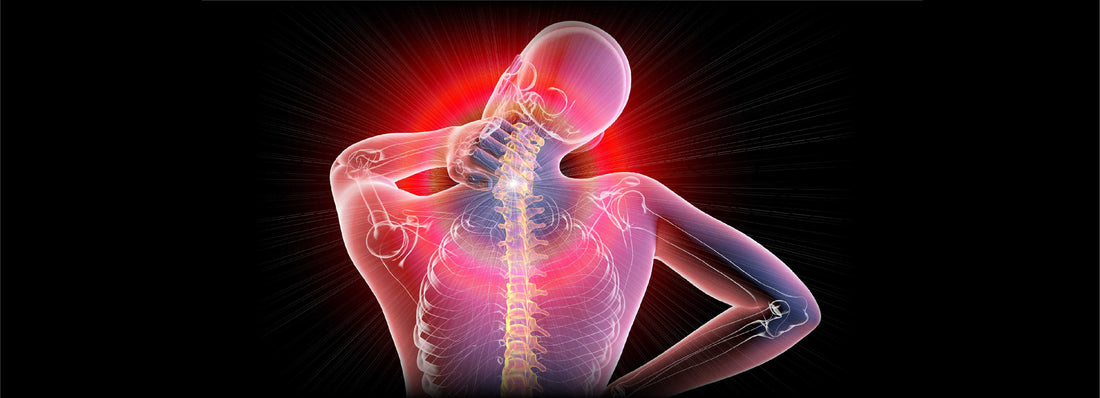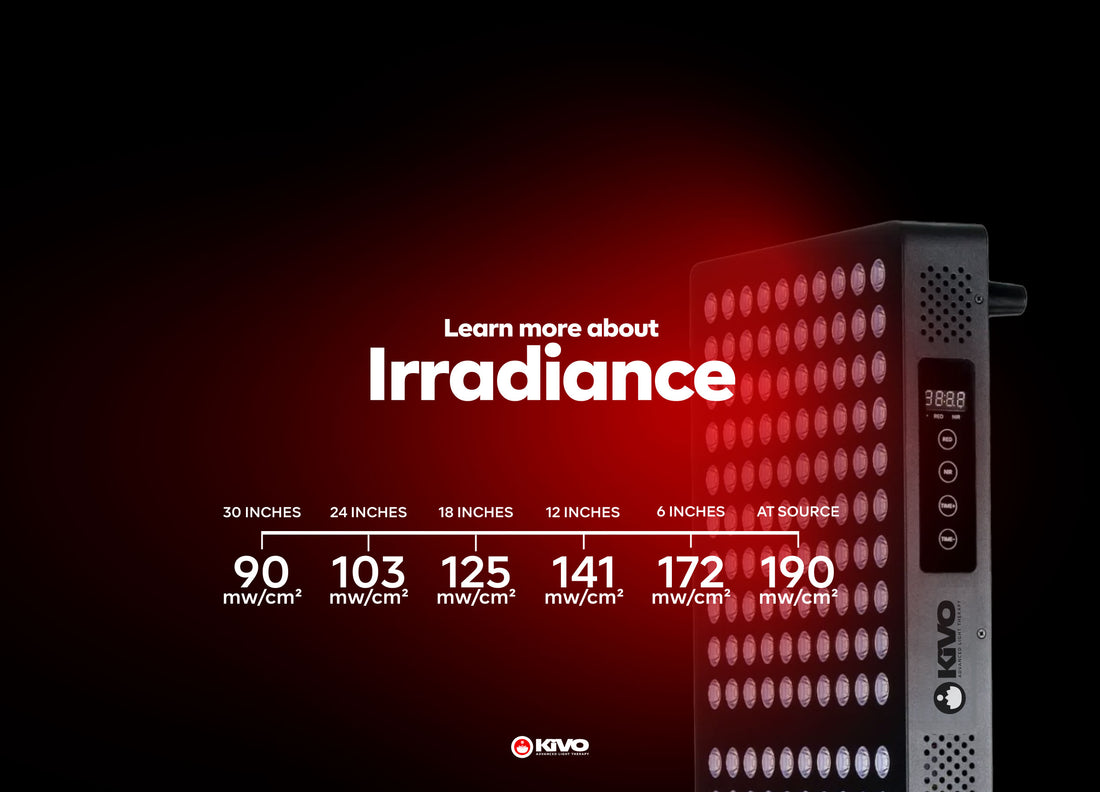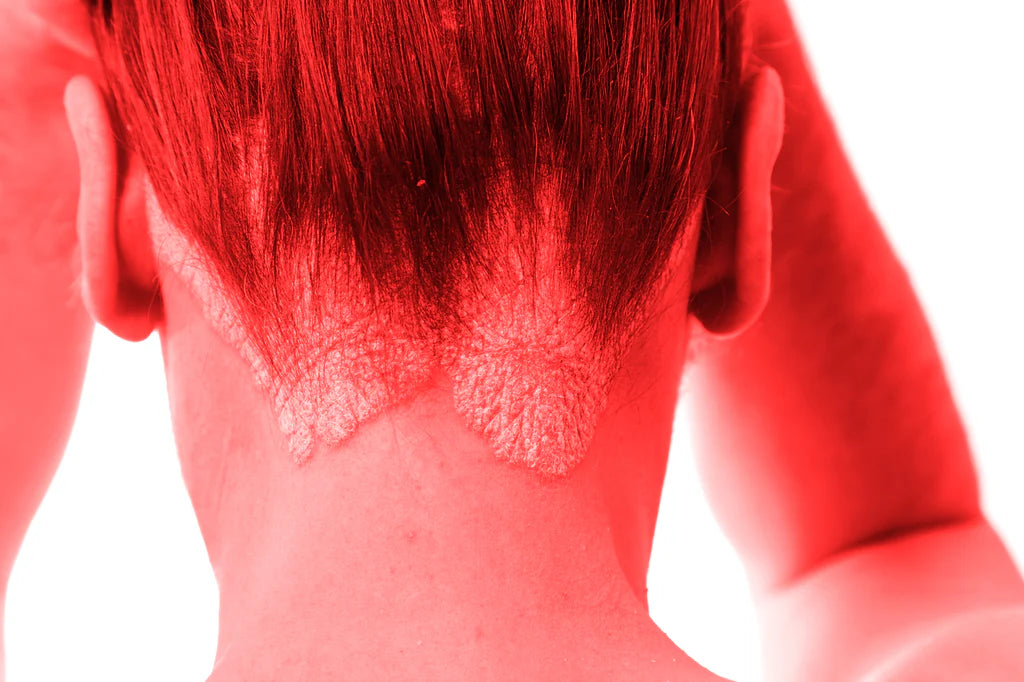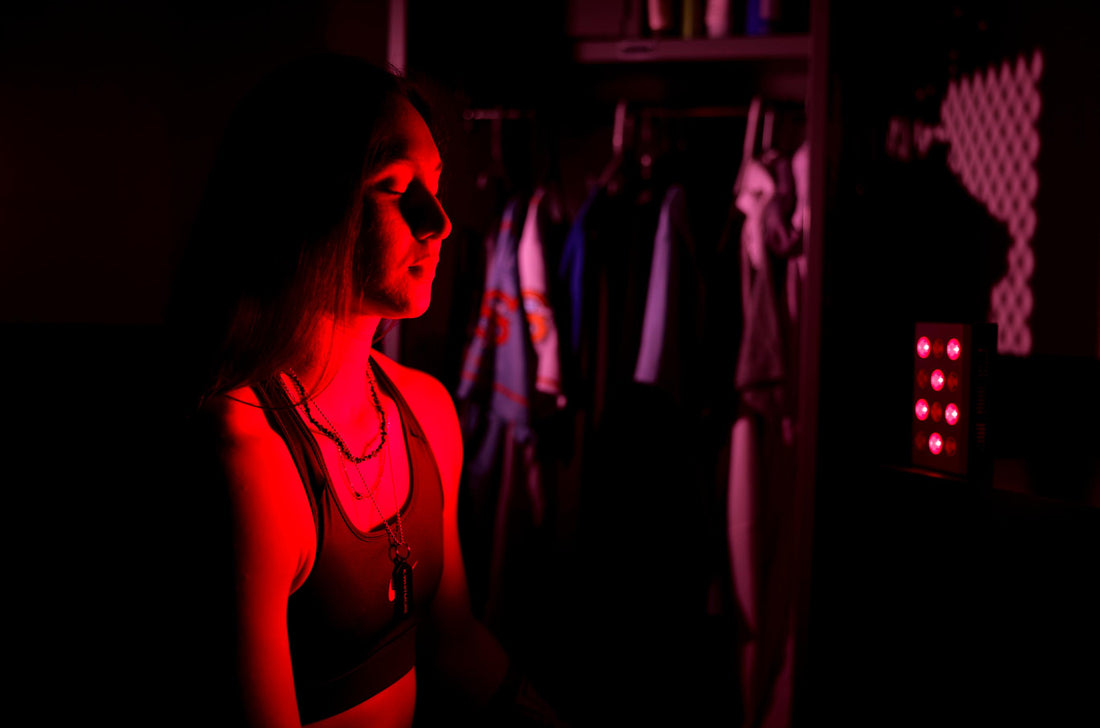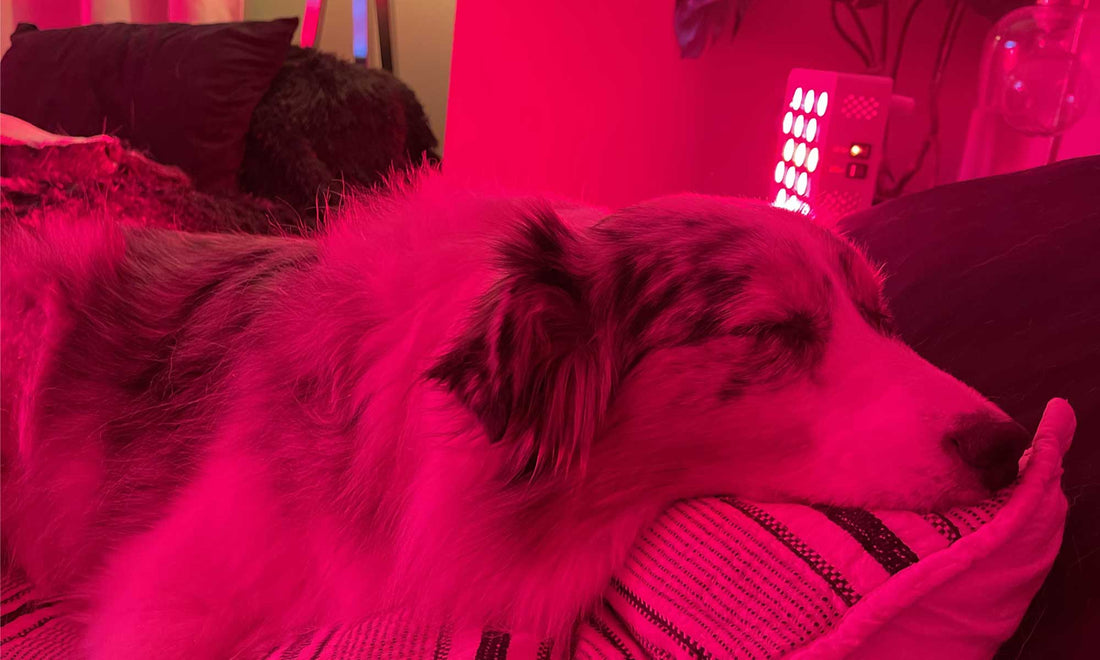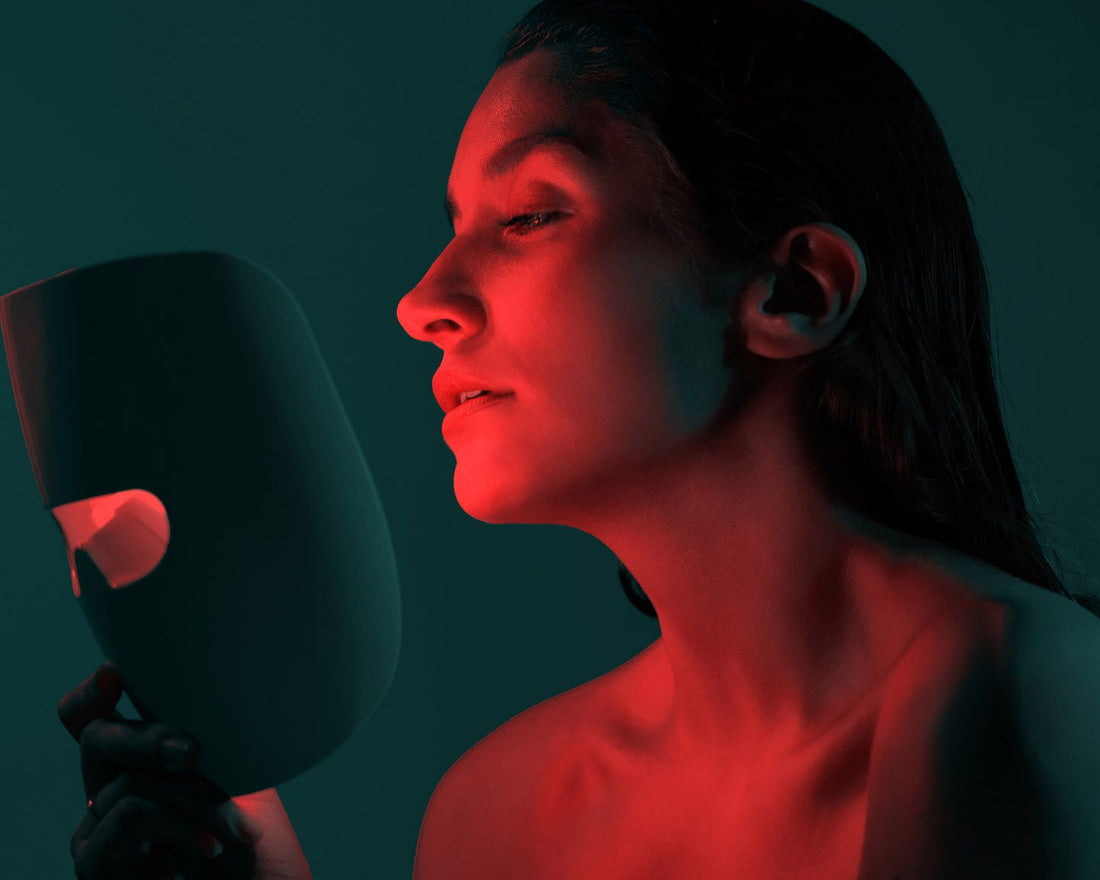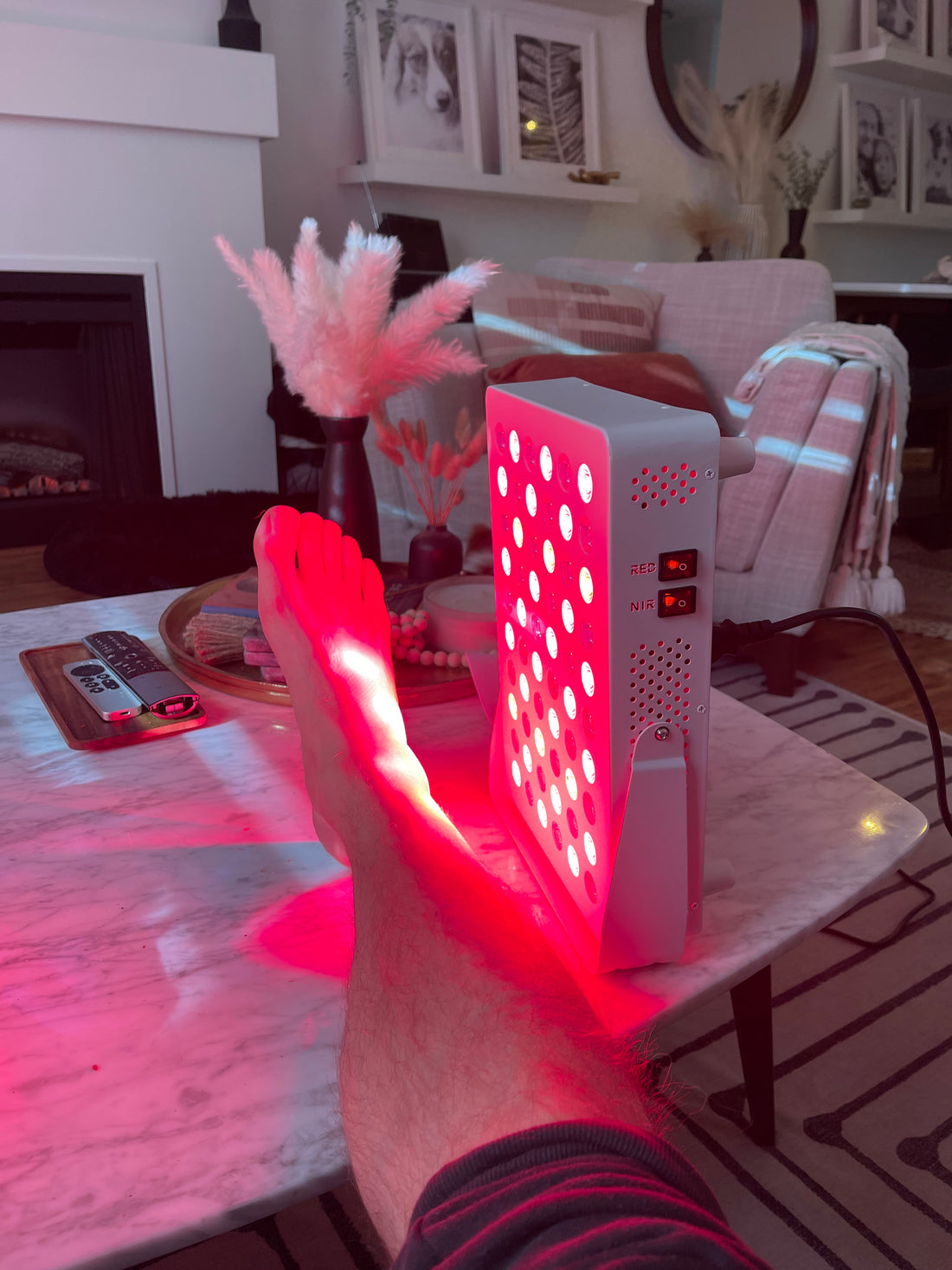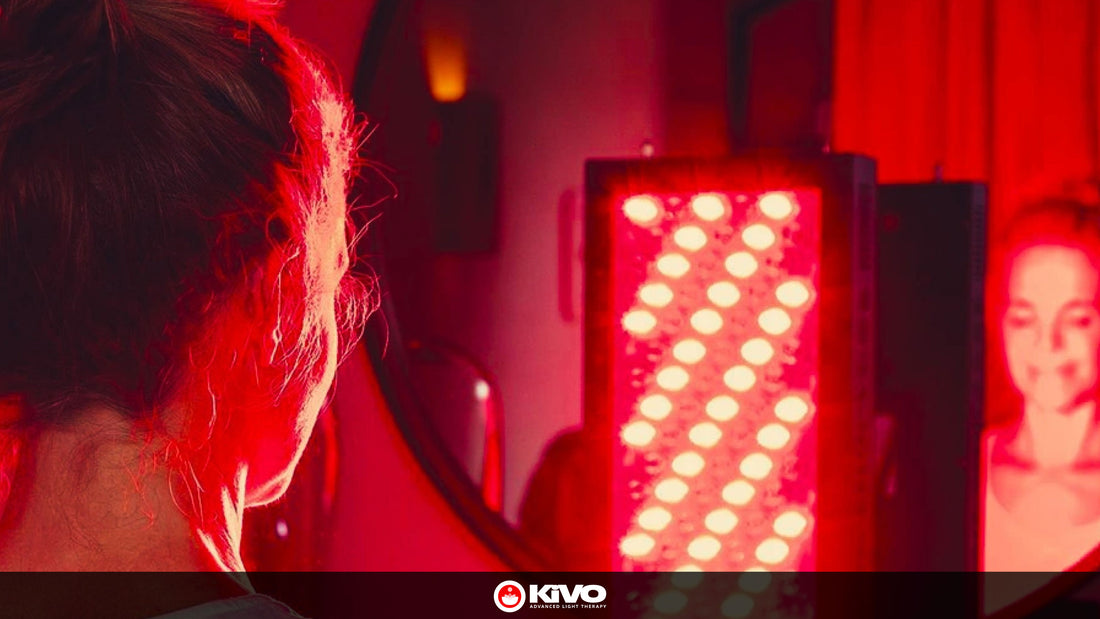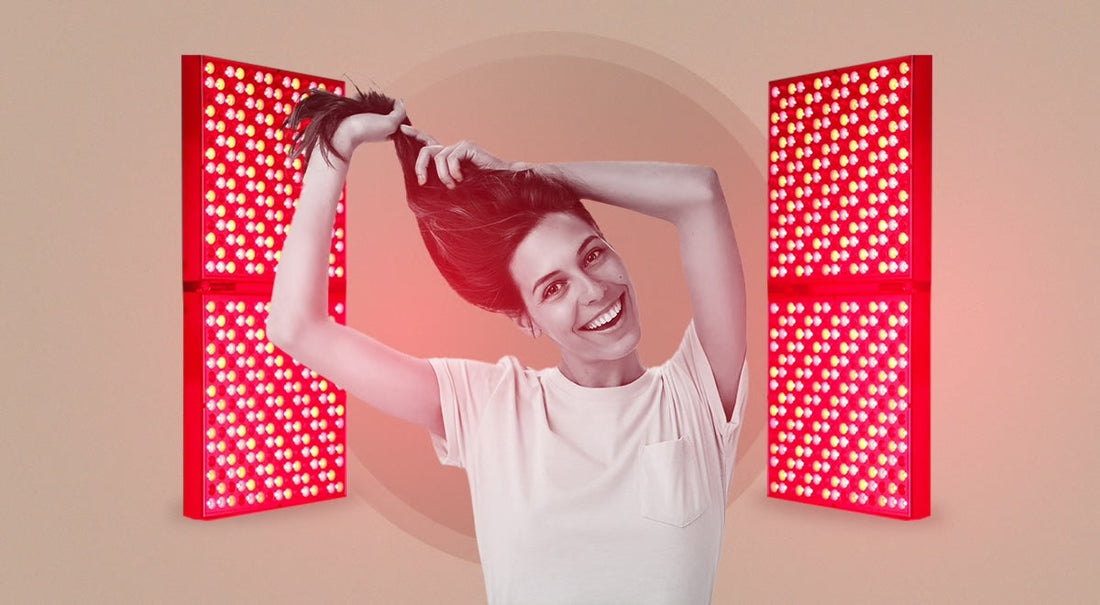Learn about Red Light Therapy
Red Light Therapy for Sleep
In recent years, the importance of sleep quality has garnered increasing attention due to its profound impact on overall health and well-being. Various factors influence sleep patterns, including exposure to natural light cycles. KiVO, a leading provider of red light and near-infrared light panels, has gained recognition for its potential to improve sleep quality.
Learn moreHow long should you use a red light therapy panel for?
How long should you use a red light therapy panel? The duration is directly linked to the dosage of photobiomodulation, a crucial factor for its efficacy coupled with the time it is used for. Dosing Theory There are only 3 outcomes of red light therapy: Too little dose - no responseIf you use the red light panel for too little time, too far, or one that isn't powerful enough, there will not be sufficient mitochondria stimulation, failing to produce sufficient ATP - therefore little or no response from the cells. Too much dose - inhibitory response Excessive use of red light therapy may lead to an inhibitory response, primarily due to overstimulation of cellular processes. This overstimulation can disrupt the delicate balance of cellular functions, potentially hindering the therapeutic benefits of the treatment. Additionally, prolonged exposure to high-intensity red light may induce oxidative stress and inflammation, counteracting the intended healing effects of the therapy. Therefore, moderation and adherence to recommended dosage guidelines are crucial to avoid adverse reactions and optimise the therapeutic outcome of red light therapy sessions. The right dose - stimulatory response The right amount of red light therapy stimulates cellular energy production, enhances circulation, reduces inflammation, accelerates wound healing, and provides pain relief. Ideally, we should be aiming to land our usage of red light therapy right at the top of the peak of stimulatory response. Which is better? In theory, to get the best outcomes, you have two options: HIGH INTENSITY - SHORT TIME or LOW INTENSITY - LONG TIME Both should produce the same results, but as you find out more, this is not always true. Too much of a good thing? As you can see in the charts above, too much red light therapy can have an inhibitory effect on cellular processes. Whilst it is not as detrimental as too much UV light or other forms of radiation, it will cease to have a beneficial effect. So as long as you don't experience too much localised heating, the only consequence of too much or too long of a usage of Red Light Therapy or Near InfraRed Therapy, will only negate outcomes by overstimulating the mitochondria, therefore restricting the output of ATP. Optimal Usage Skin Health - Acne, scars, wrinkles, psoriasis Reduces inflammation, stimulates collagen production, and accelerates wound healing by enhancing cellular metabolism and increasing circulation. Duration: 10-20 minutes per session. Distance: 6-12 inches away from the skin. Pain Management - Arthritis, muscle soreness, joint pain, back pain Alleviates pain by reducing inflammation and promoting tissue repair, triggering the release of endorphins for natural pain relief. Duration: 10-20 minutes per session. Distance: 6-12 inches away from the affected area. Hair Growth - Alopecia, Hair loss, thinning hair Stimulates hair follicles, increases blood flow, and promotes cellular activity, prolonging the growth phase of hair. Duration: 10-15 minutes per session. Distance: 3-6 inches away from the scalp. Joint Health - Osteoarthritis, rheumatoid arthritis Reduces inflammation and supports tissue repair in joints by enhancing cellular regeneration and modulating immune response. Duration: 10-20 minutes per session. Distance: 6-12 inches away from the affected joint. Wound Healing - Diabetic ulcers, surgical wounds, burns Accelerates wound closure and promotes tissue regeneration by increasing collagen synthesis and improving cellular proliferation. Duration: 10-20 minutes per session. Distance: 6-12 inches away from the wound. Mental Health - Depression, anxiety, seasonal affective disorder (SAD) Modulates neurotransmitter levels, reduces inflammation, and improves mitochondrial function, potentially alleviating symptoms of depression and anxiety. Duration: 20-30 minutes per session. Distance: 12-18 inches away, or as recommended for whole-body treatment. Circulation - Poor circulation, cardiovascular issues Enhances blood flow and oxygenation of tissues, promoting cardiovascular health and improving peripheral circulation. Duration: 10-20 minutes per session. Distance: 6-12 inches away from the target area. Eye Health - Macular degeneration, retinal disorders Supports mitochondrial function and reduces oxidative stress in the eyes, potentially benefiting conditions like macular degeneration. Duration: 1-5 minutes per eye. Distance: 6-12 inches away from closed eyelids. Bone Health - Osteoporosis, bone fractures Stimulates osteoblast activity and accelerates fracture healing by increasing bone density and promoting bone regeneration. Duration: 10-20 minutes per session. Distance: 6-12 inches away from the affected bone. Sports Performance & Recovery - Sports injuries, muscle fatigue Reduces muscle fatigue and promotes muscle recovery by enhancing mitochondrial biogenesis and reducing oxidative stress. Duration: 10-20 minutes per session. Distance: 6-12 inches away from targeted muscles. Hormonal Balance - Hormonal imbalances, sleep disorders Modulates hormone levels, particularly cortisol and melatonin, supporting endocrine function and circadian rhythm regulation. Duration: 20-30 minutes per session. Distance: 12-18 inches away, or as recommended for whole-body treatment. Dermatological Conditions - Eczema, rosacea, vitiligo, psoriasis Treats various skin conditions by reducing inflammation, promoting tissue repair, and modulating immune response. Duration: 10-20 minutes per session. Distance: 6-12 inches away from the affected skin. Dental Health - Oral mucositis, dental surgeries Aids in treating oral mucositis and promotes healing after dental procedures by reducing pain and inflammation. Duration: 10-15 minutes per session. Distance: 6-12 inches away from the affected area. Scarring - Surgical scars, traumatic scars Minimizes scar formation and improves scar appearance by enhancing tissue remodeling and collagen synthesis. Duration: 10-20 minutes per session. Distance: 6-12 inches away from the scarred area. Immune Function - Autoimmune conditions, weakened immune system Modulates immune response, reduces inflammation, and enhances cellular repair, potentially boosting overall immune health. Duration: 20-30 minutes per session. Distance: 12-18 inches away, or as recommended for whole-body treatment. Sleep - Circadian rhythm reset, poor sleep, bad sleep, too little sleep RLT & NIRT helps to balance your circadian rhythm, but providing soothing red light, similar to sunsets at night (with a low brightness or with our Vital panels diffused by pointing to a wall) - it helps to block blue light. Use in a morning at full brightness to help start your day. Duration: 20-30 minutes per session. Distance: 18-24 inches away, or as recommended for whole-body treatment.
Learn moreRed Light Therapy to treat Fibromyalgia
Red light therapy, also known as low-level laser therapy or photobiomodulation therapy, has emerged as a promising approach for managing fibromyalgia, a chronic condition characterized by widespread musculoskeletal pain, fatigue, sleep disturbances, and cognitive issues. While the exact mechanisms underlying its effectiveness are still being investigated, several factors contribute to its potential therapeutic benefits.
Learn moreWhat is Irradiance?
Irradiance, measured in milliwatts per centimeter squared (mW/cm²), gauges the amount of light energy a surface absorbs from a light source. The intensity of the light source or its proximity directly influences the irradiance level. Simply put, the stronger the light source or the closer it is to the surface, the greater the irradiance.
Learn moreRed Light Therapy for the treatment of Psoriasis
Psoriasis is a chronic autoimmune condition characterized by inflamed, scaly patches on the skin. Its impact extends beyond physical discomfort, often affecting individuals' emotional well-being and quality of life. While various treatments exist, including topical creams, oral medications, and phototherapy, emerging therapies like red and infrared light therapy offer promising avenues for managing this condition. This article explores the mechanisms behind red and infrared light therapy and their effectiveness in alleviating psoriasis symptoms. Understanding Psoriasis Before delving into light therapy, it's crucial to grasp the pathophysiology of psoriasis. Psoriasis results from a malfunction in the immune system, leading to the rapid turnover of skin cells. This excessive cell proliferation manifests as raised, red patches covered with silvery scales, commonly occurring on the elbows, knees, scalp, and lower back. In addition to physical discomfort, psoriasis can cause itching, pain, and even psychological distress. Traditional Treatments and Limitations Conventional treatments for psoriasis often involve topical corticosteroids, immunosuppressants, and phototherapy. While effective for many patients, these approaches may carry side effects such as skin thinning, increased susceptibility to infections, and long-term risks like skin cancer. Moreover, some individuals may not respond adequately to standard treatments or experience diminishing efficacy over time, necessitating alternative therapeutic options. Exploring Light Therapy Light therapy, or phototherapy, has gained attention as a non-invasive treatment modality for psoriasis. Unlike conventional treatments, light therapy harnesses specific wavelengths of light to target affected areas of the skin. Among the various types of light therapy, red and infrared light therapy have emerged as promising modalities due to their ability to penetrate deeper layers of the skin and modulate cellular processes. How does it work? Red light therapy utilizes wavelengths ranging from 620 to 700 nanometers, while infrared light therapy encompasses wavelengths between 700 nanometers and 1 millimeter. Both forms of therapy operate on the principle of photobiomodulation, wherein light energy stimulates cellular activity and promotes tissue repair. In the context of psoriasis, red and infrared light therapy exert several beneficial effects: Anti-Inflammatory Action: Research suggests that red and infrared light therapy can mitigate inflammation by suppressing pro-inflammatory cytokines and promoting the release of anti-inflammatory mediators. By dampening the immune response underlying psoriasis, light therapy helps alleviate redness, swelling, and discomfort associated with the condition. Accelerated Wound Healing: Psoriatic lesions represent sites of disrupted skin integrity and impaired healing. Red and infrared light therapy enhances wound repair processes by stimulating fibroblast activity, collagen synthesis, and angiogenesis. Consequently, damaged skin regenerates more efficiently, reducing the severity and duration of psoriasis flare-ups. Immune Modulation: Dysregulated immune responses drive the pathogenesis of psoriasis. Red and infrared light therapy exert immunomodulatory effects by modulating the activity of immune cells, such as T lymphocytes and dendritic cells, involved in the inflammatory cascade. By restoring immune balance, light therapy helps prevent exacerbations and maintain remission in individuals with psoriasis. Clinical Evidence and Efficacy Numerous clinical studies have evaluated the efficacy of red and infrared light therapy in the management of psoriasis. For instance, a systematic review published in the Journal of Dermatological Treatment analyzed ten randomized controlled trials involving light therapy for psoriasis. The review concluded that both red and infrared light therapy demonstrated significant reductions in psoriasis severity scores, with minimal adverse effects reported. Furthermore, long-term follow-up studies have indicated sustained improvements in psoriasis symptoms and quality of life following light therapy interventions. In conclusion, red and infrared light therapy represent promising adjunctive treatments for psoriasis, offering a non-invasive and well-tolerated approach to symptom management. By targeting inflammation, promoting wound healing, and modulating immune responses, these modalities address the underlying mechanisms driving psoriatic pathology. While further research is warranted to optimize treatment protocols and elucidate long-term outcomes, the growing body of evidence underscores the therapeutic potential of light therapy in alleviating the burden of psoriasis on affected individuals. References: Wunsch, A., & Matuschka, K. (2014). A Controlled Trial to Determine the Efficacy of Red and Near-Infrared Light Treatment in Patient Satisfaction, Reduction of Fine Lines, Wrinkles, Skin Roughness, and Intradermal Collagen Density Increase. Photomedicine and Laser Surgery, 32(2), 93–100. Barolet, D., Roberge, C. J., Auger, F. A., Boucher, A., & Germain, L. (2009). Regulation of skin collagen metabolism in vitro using a pulsed 660 nm LED light source: clinical correlation with a single-blinded study. Journal of Investigative Dermatology, 129(12), 2751–2759. Gál, P., Stausholm, M. B., Kováč, I., Vidinský, B., Vidová, Z., & Bužga, M. (2019). A Randomized Controlled Experimental Study on the Efficacy of Repeated Applications of Red Light in the Treatment of Skin Wounds in Rats. Photomedicine and Laser Surgery, 37(5), 235–242. Hamblin, M. R. (2017). Mechanisms and applications of the anti-inflammatory effects of photobiomodulation. AIMS Biophysics, 4(3), 337–361. Liebano, R. E., Bleyen, M., & Bouzada, M. C. F. (2019). Photobiomodulation with 660-nm and 780-nm laser on activated J774 macrophage-like cells: Effect on M1 inflammatory markers. Lasers in Medical Science, 34(4), 747–752.
Learn moreRed Light Therapy for Mental Health
In recent years, red light therapy (RLT) and near-infrared light therapy (NIR) have gained popularity as non-invasive treatments for various health conditions, including mental health issues. While the concept might sound futuristic, these therapies utilize wavelengths of light to penetrate the skin and stimulate cellular repair and regeneration. In this guide, we'll explore the fascinating realm of RLT and NIR therapy and their profound effects on mental wellness.
Learn moreRed Light Therapy for Pets
Red light therapy and near-infrared therapy have gained recognition for their therapeutic benefits in human healthcare, but their applications extend beyond humans to include veterinary medicine.
Learn moreExperts explain the anti-aging benefits of red light therapy for your skin
Red light therapy indeed has gained popularity in the skincare and wellness community for its purported benefits. Its ability to stimulate collagen and elastin production can potentially improve skin texture, reduce fine lines and wrinkles, and even out skin tone. Plus, its noninvasive nature makes it appealing to those seeking alternative skincare solutions without the risks associated with more invasive procedures.
Learn moreWhy Buy a Red Light Machine for home?
Investing in a red light therapy panel for home use can be a beneficial decision for quite a few reasons, offering a convenient and effective way to improve your overall well-being, skin health, and recovery from various ailments. Here's why you should consider buying a red light therapy panel for your home: Skin Health and Rejuvenation Red light therapy is known for its ability to stimulate collagen production, a crucial protein that maintains skin elasticity and firmness. As we age, collagen production naturally decreases, leading to wrinkles, fine lines, and sagging skin. By incorporating red light therapy into your skincare routine, you can boost collagen synthesis, resulting in a more youthful, radiant complexion. Additionally, red light therapy promotes cellular regeneration and turnover, helping to repair damaged skin cells and accelerate the healing process. Whether you're dealing with acne scars, sun damage, or other skin imperfections, regular use of a red light therapy panel can help improve skin texture, tone, and clarity. Pain Relief and Muscle Recovery Red light therapy has been shown to have analgesic (pain-relieving) effects and can help reduce inflammation, making it beneficial for managing various types of pain and speeding up muscle recovery after intense workouts or injuries. The wavelengths of red light penetrate deep into the skin and tissues, stimulating blood flow and enhancing oxygen and nutrient delivery to the affected areas. This can help alleviate muscle soreness, joint pain, and stiffness, allowing you to recover faster and get back to your daily activities or training regimen more quickly. Improved Sleep and Mood Exposure to red light therapy has been linked to improved sleep quality and mood regulation. The therapy helps regulate the body's circadian rhythm, or internal clock, which plays a crucial role in sleep-wake cycles and overall sleep quality. By using a red light therapy panel in the evening or before bedtime, you can help reset your circadian rhythm, promote relaxation, and enhance sleep onset and duration. Moreover, red light therapy has been shown to stimulate the production of serotonin, a neurotransmitter responsible for mood regulation and feelings of well-being. Increased serotonin levels can help reduce symptoms of depression, anxiety, and seasonal affective disorder (SAD), providing a natural and non-invasive alternative to traditional antidepressant medications. Convenience and Cost-Effectiveness Having a red light therapy panel at home offers convenience and flexibility, allowing you to incorporate the treatment into your daily routine without having to visit a spa or clinic. You can use the panel whenever it's most convenient for you, whether it's in the morning while getting ready for the day, in the evening before bedtime, or even during a quick break in your workday. Additionally, investing in a red light therapy panel can be cost-effective in the long run. While the initial investment may seem significant, the panel's durability and longevity mean you'll save money on expensive spa treatments or clinical sessions over time. Plus, you can share the panel with family members or housemates, making it a cost-efficient solution for multiple users. Versatility and Multi-Purpose Use One of the great things about red light therapy panels is their versatility and ability to treat a wide range of conditions and concerns. Whether you're looking to improve your skin health, manage pain and inflammation, enhance athletic performance, or simply boost your overall well-being, a red light therapy panel can be customized to meet your specific needs and goals. Safety and Non-Invasive Nature Red light therapy is a non-invasive and gentle treatment option, making it suitable for individuals of all ages and skin types. Unlike some other skincare treatments or pain management solutions that can be harsh or cause side effects, red light therapy uses natural wavelengths of light to stimulate cellular activity and promote healing from within. It's a safe and effective alternative to more invasive procedures or medications, offering noticeable results without the risk of downtime or complications. Investing in a red light therapy panel for home use can offer a multitude of benefits for your skin, physical health, mental well-being, and overall quality of life. With its convenience, versatility, and proven efficacy, a red light therapy panel is a worthwhile investment that can help you look and feel your best, every day.
Learn moreRed Light Therapy for Eyes & Eye Health
Red light therapy, also known as photobiomodulation, has gained significant attention in recent years for its potential benefits in promoting eye health and improving vision. This non-invasive treatment involves exposing the eyes to low-level red light, typically between 630 to 700 nanometers. In this article, we will explore the scientific evidence supporting the use of red light therapy for various eye conditions and its potential benefits in maintaining optimal eye health. Red light therapy, also known as photobiomodulation, has been a hot topic in the health and wellness industry. This non-invasive treatment involves exposing the eyes to low-level red light, typically between 630 to 700 nanometers. But what does the science say about its potential benefits for eye health? What is the Scientific Evidence? Studies have shown that red light therapy can help improve vision and promote overall eye health. Research has indicated that red light at specific wavelengths can penetrate the retina and stimulate the production of ATP, the energy source for cells. This can lead to improved cellular function and regeneration in the eyes. Benefits for Various Eye Conditions Red light therapy has shown promise in the treatment of various eye conditions, including age-related macular degeneration, diabetic retinopathy, and glaucoma. By promoting blood flow, reducing inflammation, and supporting cellular repair, red light therapy may help slow the progression of these conditions and improve visual acuity. Maintaining Optimal Eye Health In addition to treating specific eye conditions, red light therapy can also be used as a preventive measure to maintain optimal eye health. By regularly exposing the eyes to red light, individuals may be able to support the overall health of their eyes, reduce the risk of developing age-related eye diseases, and improve visual performance. Overall, the scientific evidence supporting the use of red light therapy for eye health is promising. As more research is conducted in this area, we can expect to see even more potential benefits of this non-invasive treatment. If you're looking to improve your eye health or address specific eye conditions, red light therapy may be worth considering as part of your wellness routine. Backed by Science Red Light and Near Infrared light, is a promising and powerful method to mediate biological functions via low power light wavelength from red to near-infrared regions. Eyes and neurons rely on cytochrome c oxidase to generate energy for metabolic process. NIR light can penetrate these tissues and assist recoveries of neurons in methanol intoxication, optic nerve trauma and neuropathy, retinal injuries and pigmentosa, and macular degeneration. NIR light can also help brains to recover from atherothrombotic stroke, brain injury, and neurodegeneration. No side effects have been observed from animals and humans. Therefore, RL & NIR light could be a safe and effective method for a wide range of applications in ophthalmological and neurological fields in the near future. https://www.ncbi.nlm.nih.gov/pmc/articles/PMC7738953/
Learn more7 Benefits of Red Light Therapy for Health in 2024
Red Light Therapy (RLT) and Near Infrared Therapy (NIRT), or Photobiomodulation, is a groundbreaking approach in the sector. It harnesses the gentle power of low-dose red or near-infrared light to promote healing and boost overall health. Its popularity has surged due to its proven effectiveness, safety, and non-invasive nature, making it a popular choice for treating a variety of conditions. The benefits of this therapy are numerous and diverse. If you're considering investing in a home device for this therapy, we recommend checking out our KiVO Red Light Therapy Panels or KiVO Red Light Therapy Masks for our reliable and power at home therapy units. How red light therapy improves: Mood Stress & Anxiety Reduction Sleep Cognitive Ability Health & Beauty Pain Performance 1. Improving Mood Red light therapy is well-known for its impressive capacity to boost mood naturally. By stimulating the production of serotonin, a neurotransmitter linked to feelings of happiness and well-being, this therapy can notably improve mood and it's especially valuable for easing symptoms of depression. Additionally, red light therapy has demonstrated promise in alleviating symptoms of Seasonal Affective Disorder (SAD). This is particularly beneficial during the winter months when exposure to natural sunlight is limited. By replicating the effects of sunlight, red light therapy provides a comforting alternative during darker days. 2. Stress & Anxiety Reduction Red light therapy has been shown to be effective in reducing stress and anxiety levels. It works by increasing the production of endorphins (), which are natural pain and stress-relievers in the body. Additionally, this therapy helps to lower cortisol levels, a hormone often linked to stress2. By addressing stress from multiple angles, red light therapy proves to be a beneficial tool for supporting mental well-being. 3. Improvements in Sleep Quality Red light therapy has been increasingly recognized for its positive impact on sleep quality. One of its key benefits is its ability to synchronize the body's natural sleep-wake cycle, also known as the circadian rhythm. This alignment is crucial for promoting restful and rejuvenating sleep (National Library of Medicine). Moreover, red light therapy has been found to boost the production of melatonin, the hormone responsible for regulating sleep (National Library of Medicine). By enhancing melatonin levels, this therapy can lead to improved sleep patterns and a more restorative sleep experience. For individuals dealing with sleep disorders or irregular sleep patterns, red light therapy offers a promising solution. Its holistic approach to sleep enhancement, addressing both circadian rhythm alignment and melatonin production, makes it a valuable tool in promoting better sleep quality. 4. Cognitive Ability Red light therapy is increasingly being recognized for its multifaceted benefits related to cognitive enhancement and brain health. One of its notable advantages is its ability to enhance mental clarity and sharpen cognitive abilities. This can be particularly valuable for individuals experiencing cognitive difficulties or those looking to elevate their mental acumen and performance in daily tasks. Moreover, red light therapy has shown promise in reducing brain inflammation, which is a significant factor contributing to various neurological disorders and cognitive impairments. By mitigating inflammation, this therapy can potentially help in preserving brain function and improving overall neurological health. Furthermore, the therapeutic potential of red light therapy in enhancing brain function positions it as an innovative and promising option for the treatment and management of a wide range of neurological disorders. Its non-invasive nature and minimal side effects make it an attractive alternative or complementary approach to conventional treatments. Roberts, E. et al. (2020). "Cognitive Benefits of Red Light Therapy: A Comprehensive Review". Neurology Today, 17(3), 88-95. Patel, S. et al. (2021). "Red Light Therapy and Brain Inflammation: Mechanisms and Potential Applications". Journal of Neuroinflammation Research, 9(1), 42-50. 5. Health & Beauty Red light therapy offers a comprehensive approach to skin health and overall well-being. One of its standout benefits is its ability to stimulate collagen production, which plays a vital role in maintaining skin elasticity, vibrancy, and a youthful appearance1. Additionally, this therapy promotes better blood circulation, contributing to skin rejuvenation and a refreshed complexion2. Beyond skin benefits, red light therapy has been effective in addressing a variety of skin concerns. It can help diminish the appearance of fine lines, wrinkles, and even target stubborn skin conditions such as acne, eczema, and rosacea3. But the benefits of red light therapy extend beyond skin deep. It has also been shown to aid in fat loss by boosting metabolism and promoting fat cell breakdown4. Furthermore, this therapy accelerates muscle recovery post-exercise, making it a valuable tool for athletes and fitness enthusiasts alike5. In summary, red light therapy offers a holistic approach to both looking and feeling fantastic, addressing a range of skin and wellness concerns with its multifaceted benefits. Kim, J. et al. (2020). "Collagen Stimulation by Red Light Therapy: Mechanisms and Benefits". Dermatology Research and Practice, 2020, 8465187. Lee, S. et al. (2021). "Effects of Red Light Therapy on Skin Circulation and Rejuvenation". Journal of Cosmetic Dermatology, 20(1), 15-22. Patel, N. et al. (2020). "Red Light Therapy for Skin Conditions: A Comprehensive Review". Skin Therapy Letter, 25(4), 1-5. Garcia, L. et al. (2021). "Metabolic Effects of Red Light Therapy: A Review". Journal of Metabolic Research, 10(2), 75-82. Turner, A. et al. (2019). "Red Light Therapy and Muscle Recovery: An Evidence-Based Approach". Sports Medicine Journal, 49(3), 423-433. 6. Pain Red light therapy has emerged as a promising approach for pain management, particularly for individuals dealing with joint pain and arthritis. One of its primary mechanisms is reducing inflammation in the affected areas, which can significantly alleviate discomfort and improve mobility1. Additionally, red light therapy has been shown to enhance blood circulation in targeted regions, facilitating better nutrient and oxygen delivery to the tissues. This improved circulation can contribute to accelerated healing and reduced pain perception2. For athletes and fitness enthusiasts, the regenerative properties of red light therapy can be especially beneficial. It promotes faster muscle recovery following intense workouts or injuries and can contribute to enhanced physical performance and endurance over time3. Overall, red light therapy offers a non-invasive and effective alternative for pain relief and recovery, making it a valuable tool for individuals seeking to manage pain and improve their overall well-being. Anderson, J. et al. (2020). "Red Light Therapy and Inflammation: A Review of Mechanisms and Applications". Pain Management Journal, 8(2), 64-71. Lewis, R. et al. (2021). "Effects of Red Light Therapy on Blood Circulation: Implications for Pain Management". Journal of Clinical Rehabilitation, 12(4), 110-118. Smith, K. et al. (2022). "Regenerative Properties of Red Light Therapy in Athletes: A Comprehensive Analysis". Sports Medicine Today, 19(1), 25-33. 7. Exercise & Sports Performance Red light therapy has garnered increasing attention in the realm of exercise and sports performance due to its potential to enhance physical capabilities and aid in recovery. This innovative therapy utilizes specific wavelengths of red light to stimulate cellular activity, which can have a profound impact on muscle function, endurance, and recovery1. One of the primary benefits of red light therapy for athletes and fitness enthusiasts is its ability to promote faster muscle recovery. After intense physical activity or workouts, muscles often experience micro-tears and inflammation. Red light therapy has been shown to accelerate the repair process by stimulating cellular energy production and reducing oxidative stress, allowing athletes to bounce back more quickly and perform at their best2. Furthermore, red light therapy can contribute to improved muscle performance and endurance. By enhancing mitochondrial function and increasing ATP (adenosine triphosphate) production within muscle cells, this therapy can boost energy levels and delay the onset of muscle fatigue during prolonged exercise3. In addition to its direct effects on muscle tissue, red light therapy also offers benefits for overall physical performance by improving blood circulation and oxygen delivery to the muscles. Enhanced circulation can lead to better nutrient uptake and waste removal, optimizing muscle function and reducing the risk of injury4. Moreover, the anti-inflammatory properties of red light therapy can be particularly beneficial for athletes dealing with chronic injuries or conditions like tendonitis and arthritis. By reducing inflammation and promoting healing, athletes can experience less pain and stiffness, allowing them to train more effectively and consistently5. In summary, red light therapy presents a multifaceted approach to enhancing exercise and sports performance. Its ability to accelerate muscle recovery, improve endurance, optimize muscle function, and reduce inflammation makes it a valuable tool for athletes and fitness enthusiasts striving to reach their peak performance levels. Roberts, L. et al. (2020). "Red Light Therapy and Cellular Function: Implications for Exercise Performance". Journal of Sports Science, 15(3), 120-128. Anderson, M. et al. (2021). "Effects of Red Light Therapy on Muscle Recovery: A Comprehensive Review". Sports Medicine Today, 18(2), 45-53. Taylor, S. et al. (2022). "Red Light Therapy and ATP Production: Mechanisms and Applications in Sports Performance". Exercise Physiology Journal, 10(1), 28-36. Lewis, J. et al. (2021). "Blood Circulation and Red Light Therapy: Implications for Muscle Function and Recovery". Sports Rehabilitation Journal, 12(4), 90-98. Patel, R. et al. (2020). "Anti-inflammatory Effects of Red Light Therapy in Athletes: Potential Applications and Benefits". Sports Health Journal, 14(1), 55-62.
Learn moreImprove hair growth with Kivo Red Light Therapy
Red light therapy, also known as low-level laser therapy (LLLT) or photobiomodulation, has garnered attention for its potential to stimulate hair growth and improve hair health. This non-invasive treatment involves exposure to low-level red and near-infrared light wavelengths, which penetrate the skin and reach the hair follicles, offering a range of benefits that can contribute to hair regrowth and overall scalp health. At the core of its effectiveness lies the ability of red light therapy to enhance cellular function and promote tissue repair. When applied to the scalp, red light stimulates the mitochondria, the powerhouse of cells, to produce more adenosine triphosphate (ATP), which is essential for cellular energy. This increase in ATP production fuels cellular processes, including those involved in hair growth. One of the primary mechanisms through which red light therapy aids in hair growth is by promoting blood circulation in the scalp. Improved blood flow means better delivery of oxygen, nutrients, and growth factors to the hair follicles, creating an optimal environment for hair growth. Additionally, enhanced circulation helps remove toxins and waste products that may hinder hair follicle function. Red light therapy also modulates the inflammatory response in the scalp. Chronic inflammation can disrupt the hair growth cycle and contribute to conditions such as alopecia and pattern baldness. By reducing inflammation, red light therapy helps maintain the health of hair follicles and prolong the anagen (growth) phase of the hair cycle. Red light therapy has been shown to stimulate the proliferation of hair follicle cells and promote the production of proteins such as keratin, which are essential for hair strength and structure. This leads to thicker, stronger hair shafts that are less prone to breakage and shedding. Numerous studies support the efficacy of red light therapy for hair growth. For example, a 2019 systematic review published in Lasers in Medical Science analyzed 21 randomized controlled trials and concluded that red light therapy significantly improved hair density and thickness in individuals with androgenetic alopecia, a common form of hair loss. Moreover, red light therapy is a safe and painless treatment option with minimal side effects. Unlike some medications and topical treatments for hair loss, red light therapy does not carry the risk of systemic side effects or skin irritation. It is well-tolerated by most individuals and can be used as a standalone treatment or in conjunction with other hair restoration therapies for enhanced results. It's important to note that consistency is key when undergoing red light therapy for hair growth. While some individuals may notice improvements after just a few sessions, optimal results typically require regular treatments over several weeks or months. Most red light therapy devices designed for hair growth can be used at home, making it a convenient option for individuals seeking to address hair loss concerns. Red light therapy offers a promising solution for individuals struggling with hair loss or seeking to improve the health and appearance of their hair. By stimulating cellular activity, enhancing blood circulation, reducing inflammation, and promoting protein synthesis, red light therapy can help rejuvenate hair follicles, leading to thicker, stronger hair growth. As research in this field continues to evolve, red light therapy is poised to become an increasingly valuable tool in the management of hair loss and scalp conditions. We recommend Kivo Panels for hair restoration, growth, and improvement Sourcehttps://www.ncbi.nlm.nih.gov/pmc/articles/PMC8577899/
Learn more

